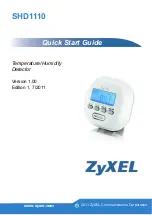
Step 2: Discharging the battery
Before you begin a full discharge, disable hibernation.
To disable hibernation:
1.
Select
Start > Control Panel > Performance and Maintenance > Power Options > Hibernate
tab.
2.
Clear the
Enable hibernation
check box.
3.
Click
Apply
.
The computer must remain on while the battery is being discharged. The battery can discharge whether
or not you are using the computer but will discharge faster while the computer is in use.
●
If you plan to leave the computer unattended during the discharge, save your information before
beginning the discharge procedure.
●
If you use the computer occasionally during the discharge procedure and have set energy-saving
timeouts, expect the following performance from the system during the discharge process:
◦
The monitor will not turn off automatically.
◦
Hard drive speed will not decrease automatically when the computer is idle.
◦
System-initiated hibernation will not occur.
To fully discharge a battery:
1.
Right-click the
Power Meter
icon in the notification area, at the far right of the taskbar, and then
click
Adjust Power Properties
.
– or –
Select
Start > Control Panel > Performance and Maintenance > Power Options
.
2.
Record the 4 settings listed in the
Running on batteries
and
Plugged in
columns so that you can
reset them after the calibration.
3.
Set the 4 options to
Never
.
4.
Click
OK
.
5.
Unplug the computer from its external power source, but do
not
turn off the computer.
6.
Run the computer on battery power until the battery is fully discharged. The battery light begins to
blink in an amber color when the battery has discharged to a low-battery condition. When the battery
is fully discharged, the battery light turns off and the computer shuts down.
24
Chapter 7 Batteries
Содержание Presario V6700 - Notebook PC
Страница 1: ...Power Management User Guide ...
Страница 34: ......







































